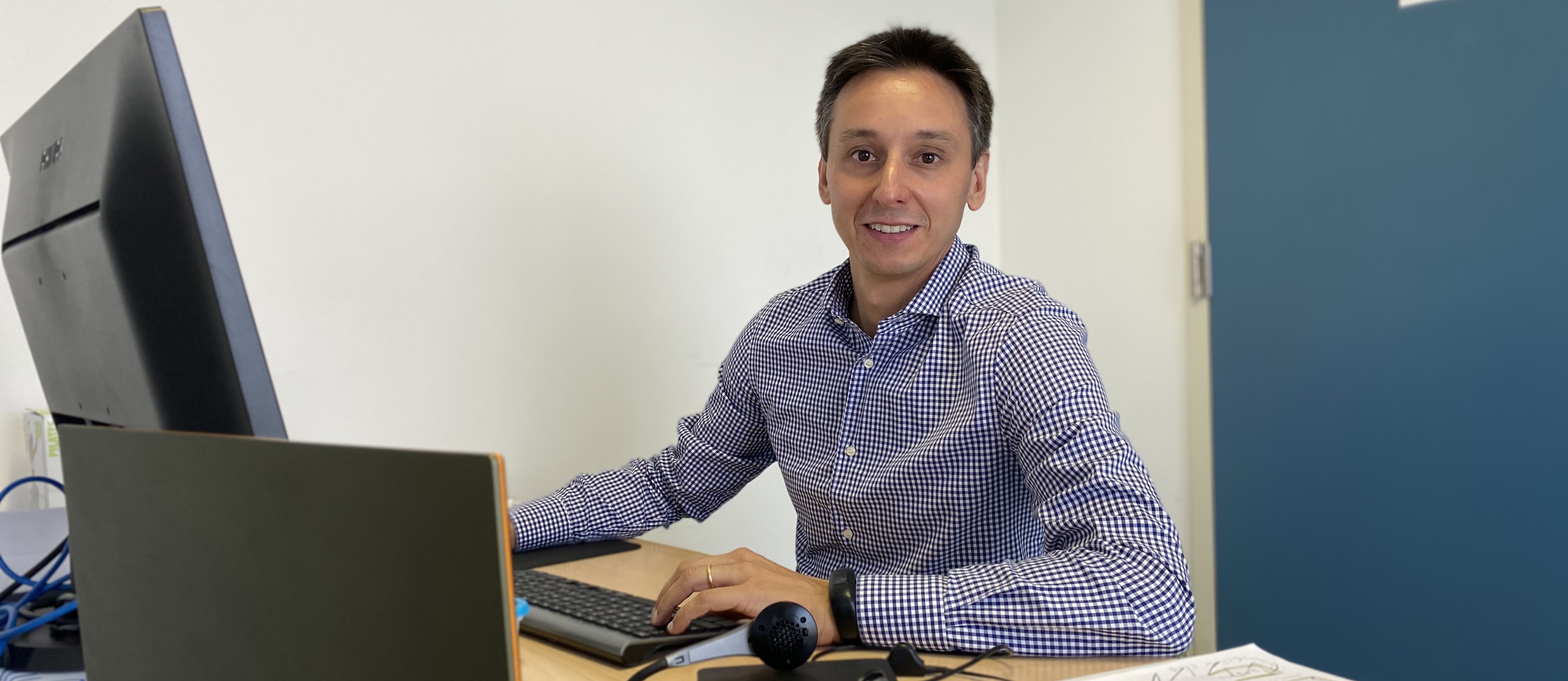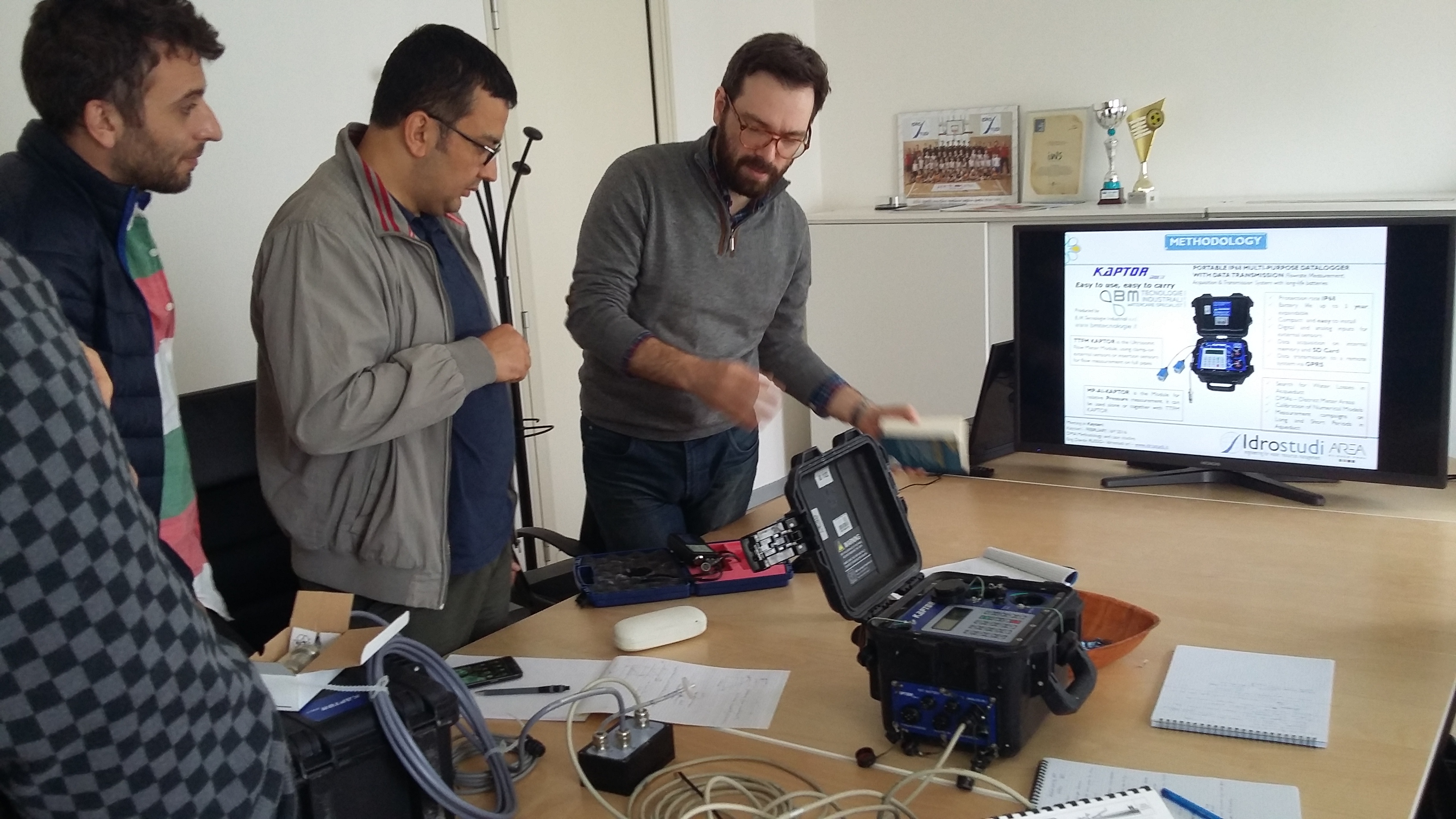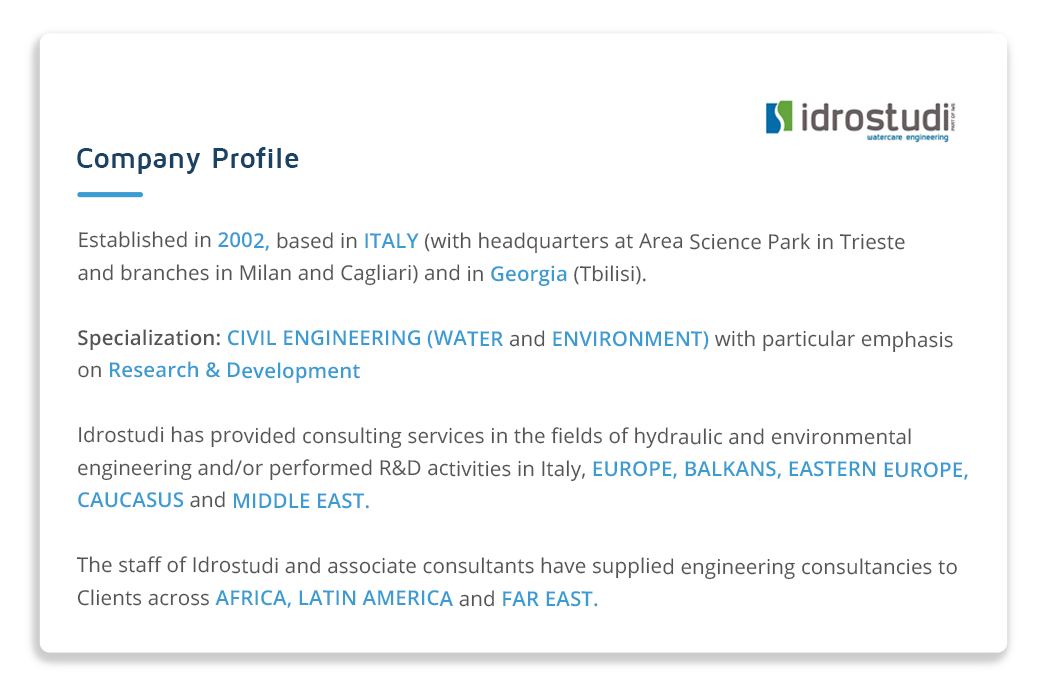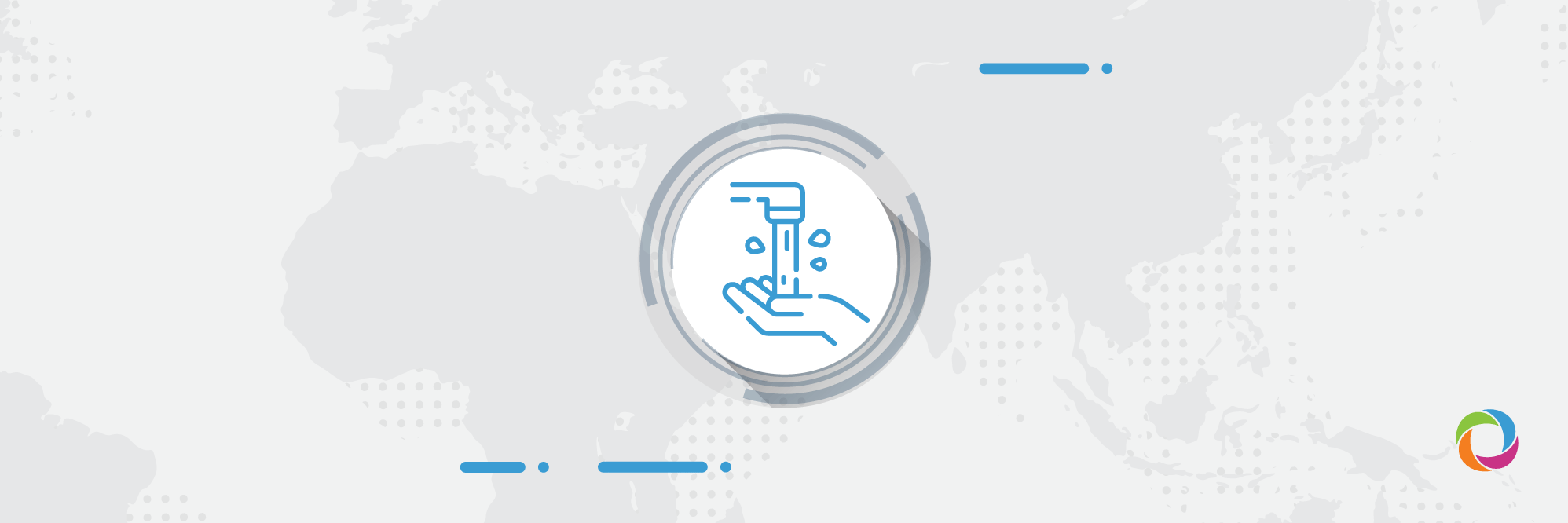Inhabitants of Ancient Rome were among the first urban residents to enjoy drinking water delivered straight to their homes. Today, Italian engineers continue their ancestors’ work by helping millions of people around the world to secure access to water and sanitation. However, while demand for this life-essential resource is constantly growing, billions still live in regions with absolute water scarcity.
This deficiency could be satisfied by transferring the results of research and development in modern aqueduct management to water supply utilities in developing countries although the process is not as easy as it may sound. Agostino Avanzi, an International Business Manager from Idrostudi LLC – a pioneer in combining research and development with on-field implementation, confirms this. “It is hard to be both a researcher and an engineer who implements the project but it is a unique opportunity to develop new models, with increased productivity and precision,” he says.

DevelopmentAid considered an interview with Idrostudi’s Agostino Avanzi as a great opportunity to take a deeper dive into the water supply and sewerage sector in both the developed and developing world.
“Georgia, Turkey, Moldova, Italy, Albania – water utility companies have similar patterns in their management and what is most important – there is one similarity in all water network architectures,” says Agostino.
“They all leak,” he adds.
Wait, what? Water supply networks in rich countries encounter water leakages similarly to aqueducts in Africa or the former Soviet Union?
“Yes, absolutely. It is only a matter of numbers. In the EU, for example, the average value of losses is 20-30%. Some of the old networks in Italy may register even 40-50%. This means that if there are 100 liters of water pumped into the network – only 60 liters will reach the consumers while 40 will leak outside the network. In the developing countries where Idrostudi has implemented several projects, we discovered leakages of up to 70%”.
Those losses – who pays for them and what are the consequences?
The losses are met by the utilities [water utility companies – Ed] and of course, they increase the final price which in the end is added to the consumer’s bill. While this hits the customers directly, there are a few more consequences that are invisible to consumers. The utility suffers from increased power consumption which is needed to pump more water into the system – it’s a waste of energy. This leads to a negative impact on the environment driven by higher CO2 emissions and irrational use of water resources.
You mean all this is generated by leaking pipes?
In a way, yes. But there are many more aspects that Idrostudi has discovered during its work. Our team of nearly 40 engineers, many of whom have a PhD in engineering, is constantly at work at the research and development center in the AREA science park in Trieste, Italy. We also work with universities across Italy and the EU. Relying on science and on our practical expertise, we can definitely say that the design and the architecture of the water supply network also play a crucial role in preventing the negative consequences I described earlier. This is why it is extremely important for developing countries to invest as much as needed now in order not to lose out in 10-15 years when it will be much more expensive to identify the problem and rebuild the system.

Speaking of identifying the problem – is it hard to find a leakage in a city water or sewerage network?
Apparently, it should be like looking for a needle in a haystack. But not for Idrostudi engineers. During one of our projects in Turkey, in the city of Malatya, we worked with a 2,700 km network of pipes. In 12 months, our team of engineers pinpointed 190 (!) leakages. We applied “Waterguard” – an innovative monitoring system for Hydraulic Urban Networks. It is a complex software created by our R&D department comprising a huge network of sensors, data acquisition and processing, and numerical modelling. It took us almost a year to achieve the result but it was worth it.
Our team worked during the night – when the flow in the pipes was less and it was easier to track the water loss. Long story short – we installed hundreds of sensors in the key elements of the water network – valves, meters, pumping stations. We then proceeded with data acquisition and interpretation through numeric modelling.
Can you transform those 190 leakages into figures that would help our readers better understand the importance of leakage management?
Our calculations prove that, by managing the leakages, the local water utility was able to save 110 liters of water per second (which adds up to nearly 3.5 billion liters per year) and almost 1000 MWh of energy which might have been used to pump this water. Needless to say, almost 400 tons of CO2 were not emitted into the atmosphere and the local budget was able to save 500,000 EURO per year – money that can now be used for the development of other sectors.
How many similar projects has your company implemented?
We have implemented dozens of major projects over the past years in the field of water supply, using the Waterguard system. By the way, this system can be applied to absolutely all types of water supply networks. But we also specialize in urban drainage, sanitation and sewerage management, the design and construction of hydro-power plants, disaster risk reduction, and management, river hydrology, and hydraulics. In each of these sectors, we have successfully implemented projects in Georgia, Turkey, Albania, China, Italy, and the EU. Usually, the projects last from several months for short projects to four to five years for longer projects. The budgets also vary – from tens of thousands to millions, in the case of the longer projects. In every project, we tend to apply our own solutions that we developed in the field of environmental engineering.
What is the connection between ‘environmental engineering’ and tackling climate change?
It’s a close relationship. I will answer by providing an example. During a heavy rainfall, an urban sewerage network has to deal with increased volumes of stormwater. There is a part of it that can’t be treated because the waste-water plants are designed for specific flows from that urban area. The engineers must think of a place where they can direct all the excess water. Standard engineering provides grey structures, made of concrete – huge basins – where the water can be temporarily stored. On the other hand, the environmental engineering approach means the flow of excess water is not directed into a grey structure, but a green structure: wetland, a green pond, the so-called Sustainable Urban Drainage Systems (SUDS). In this way, the structure you have designed has a low environmental impact. Instead of a grey, concrete facility, the city can have a wetland or pond where its inhabitants can walk their dogs on sunny days. This is very interesting and relevant for urbanized areas such as Milan in Italy, for example.

Does this approach fit in with the Global Agenda promoted by the United Nations?
Yes. We work in a close relationship with the Global Agenda. We are mainly engaged in working with Goal 6 – Clean water and sanitation, Goal 7 – Affordable and clean energy, Goal 11 – Sustainable cities and communities, Goal 12 – Responsible consumption, and Goal 13 – Climate action.
As a signal, are the SDGs a convincing factor to invest in networks for the water utility companies in the developing world?
This is an interesting question [laughs – Ed]. As an engineer with 15 years’ experience in the sector, I am in permanent contact with the representatives of water utilities. I constantly explain the benefits of upgrading the system, the impact on the environment. Everyone is impressed. But there are few situations that I can recall when this was the factor for change. People are mostly driven by money. Their willingness to change increases when they understand that this can save them money. I always suggest that investing $1,000 today into the network can save $10,000 in several years.
What challenges in working with the developing world can you pinpoint?
I would say that the challenges we have encountered vary from ‘lost in translation’, provoked by poor communication, to lack of willingness to change from the beneficiaries. We are also used to dealing with the different behavior of the stakeholders – both private and public. But this is manageable. Idrostudi is a team of 50 professionals, looking optimistically into the future.
Thank you for the interview, Agostino.


